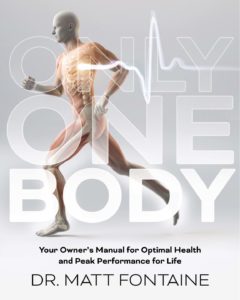09 Dec Patellofemoral Pain Syndrome
 The following Blog has many concepts taking from Solving the Patellofemoral Mystery by Mike Reinold, PT,DPT, SCS, ATC, CSCS http://www.mikereinold.com/ The Key Concepts of his EBook are:
The following Blog has many concepts taking from Solving the Patellofemoral Mystery by Mike Reinold, PT,DPT, SCS, ATC, CSCS http://www.mikereinold.com/ The Key Concepts of his EBook are:
- Studies have shown that pain in patellofemoral pain syndrome(PFPS) likely originate from surrounding soft tissue such as retinacular tissue rather than osseous/articular cartilage structures.
- Chondromalacia may not be the source of pain.
- Lateral retinacular structures have shown to have enlarged, demyelinated nerve fibers that may be the result of chronic stretching secondary to muscle imbalance.
- Reinold sites the following article published in JOSPT on classification of PF pain:
Patellofemoral Disorders: A Classification System and Clinical Guidelines for Nonoperative Rehabilitation Biomechanics
- Addressing biomechanics of the foot and ankle as well as the hip is critical to proper evaluation of the entire lower kinetic chain.
- Specifically we need to look at foot and ankle function, assess for leg length discrepancy, weakness of hip abductors and external rotators.
- Weakness of outer hip allows the knee to drift into valgus(medial stress) and can alter PF biomechanical alignment.
- The patella is often thought to be misaligned, but it is often actually the opposite.
- If the outer hip abductor muscles cannot eccentrically control knee alignment, then the femur and tibia will internally rotate under a stable patella. This is comparable to a train track getting misaligned while the box car remains stable.
- It is important to note that IT band tightness is caused by tightness in the outer hip muscles which insert directly onto the ITband. Tight outer hip muscles result from repetitive overuse, usually secondary to muscle imbalance, weak core strength, pronated(flat arched/ hyperflexible foot) or supinated(high arched/ rigid foot) feet and poor biomechanics.
- Many people with weak core stability have weak gluteal muscles. These muscles are necessary for keeping the entire lower leg in normal alignment. When they are weak, they allow the knee to drift inward, thus resulting in tracking problems in the knee. Combined with faulty foot mechanics(either too flexible or too rigid) and the knee suffers repetitive stress and ultimate injury.
- We must address pronation. Pronation can increase Q angle resulting in more valgus stress to knee, again disrupting the alignment of the femur and tibia under the patella.
- Supination can likewise cause faulty PF mechanics by causing the tibia to externally rotate under a stable patella.
- Leg length discrepancy can also cause problems. If a leg length discrepancy is present, the long leg will pronate to compensate, causing faulty PF alignment.
Corrective Exercise and Biomechanics
- The quadriceps really functions to eccentrically control knee flexion during deceleration during gait.
- The patella’s true function is to increase the mechanical advantage of the quadriceps muscle.
- There are more compressive forces on the PF joint during flexion of the knee.
- The patella has the least joint surface contact with the trochlea of the femur at 10 degrees of flexion(basically the extended knee), but the force of the quadriceps is the greatest in this position. This results in a high muscle force across a small joint surface area. High forces across a small area increase joint reactive forces, in this case, across the PF joint.
- There is much controversy over doing open chain vs. closed chain exercises when it comes to rehabilitation of the knee. Open chain meaning the foot and ankle are not in contact with the ground, closed chain meaning the foot is in contact with some stable surface.
- At 0-46 degrees of flexion, the PF joint reactive forces are less with closed chain exercises such as a leg press.
- From 50-90 degrees flexion the PF joint reaction forces are lower with open chain exercise like knee extensions.
- Open chain extensions produce increasingly significant forces on the PF joint at angles under 57 degrees, where there is less contact between the patella and the femoral trochlea. Thus these is more joint stress to the PF joint with terminal knee extension exercises.
- Both open and closed kinetic chain exercises have been shown to produce increased PF joint reaction forces at beyond 85 degrees of knee flexion.
So what exercises should you do?
- Knee extensions done from 90-40 degrees of flexion produce the lowest PF joint reactive forces, while exhibiting the greatest contact area between the patella and femoral trochlea, hence less joint stress.
- With regard to flexion of the knee during squatting or lunging in a patient with painful knee, it is best to start with limiting the depth of squat to 30 degrees and progress further as tolerated without pain.
- Performing lunges in a split stance allows for less PF joint compressive forces and should be used first when adding lunges to a painful knee.
- Single leg step downs can help assess faulty alignment due to weak hip abductors and can also be used as a rehab exercise.
- Single leg squats can be a great way to develop single leg functional strength in the frontal and transverse planes.
The influence of altered lower-extremity kinematics on patellofemoral joint dysfunction The Bottom Line
- Treatment should be based on an accurate diagnosis.
- Examination of joints above and below the knee is critical in treatment of PF pain.
- Understand that patellofemoral pain may not be due to chondromalacia.
A very effective strategy for managing Runner’s Knee is KinesioTape. To find out more about PFPS, read our article At Tri-Core Performance Therapy, we offer KinesioTaping. Find out More




